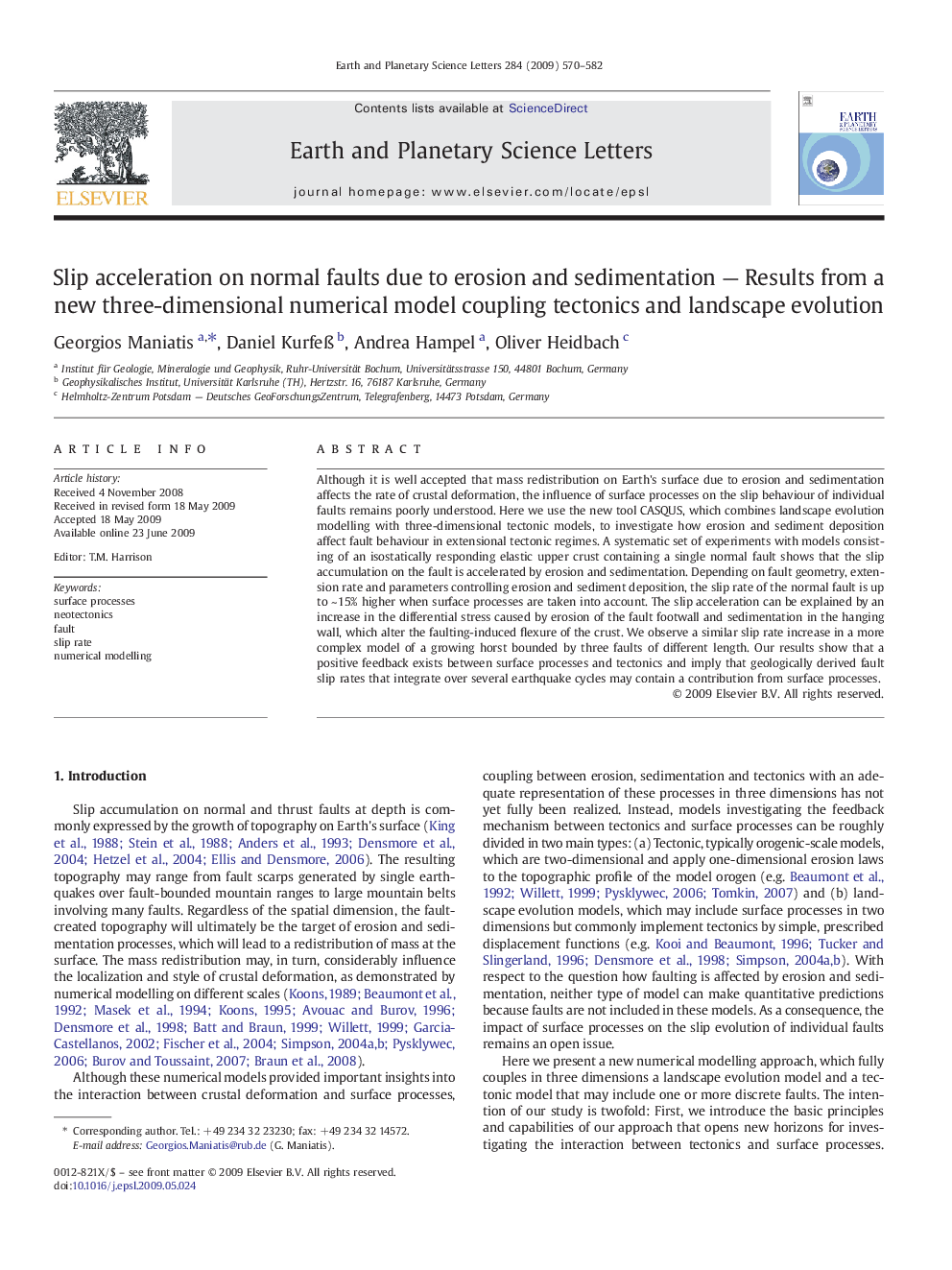| Article ID | Journal | Published Year | Pages | File Type |
|---|---|---|---|---|
| 4679009 | Earth and Planetary Science Letters | 2009 | 13 Pages |
Although it is well accepted that mass redistribution on Earth's surface due to erosion and sedimentation affects the rate of crustal deformation, the influence of surface processes on the slip behaviour of individual faults remains poorly understood. Here we use the new tool CASQUS, which combines landscape evolution modelling with three-dimensional tectonic models, to investigate how erosion and sediment deposition affect fault behaviour in extensional tectonic regimes. A systematic set of experiments with models consisting of an isostatically responding elastic upper crust containing a single normal fault shows that the slip accumulation on the fault is accelerated by erosion and sedimentation. Depending on fault geometry, extension rate and parameters controlling erosion and sediment deposition, the slip rate of the normal fault is up to ~ 15% higher when surface processes are taken into account. The slip acceleration can be explained by an increase in the differential stress caused by erosion of the fault footwall and sedimentation in the hanging wall, which alter the faulting-induced flexure of the crust. We observe a similar slip rate increase in a more complex model of a growing horst bounded by three faults of different length. Our results show that a positive feedback exists between surface processes and tectonics and imply that geologically derived fault slip rates that integrate over several earthquake cycles may contain a contribution from surface processes.
